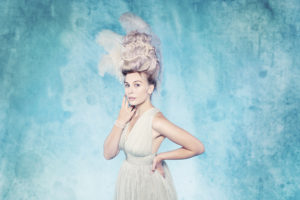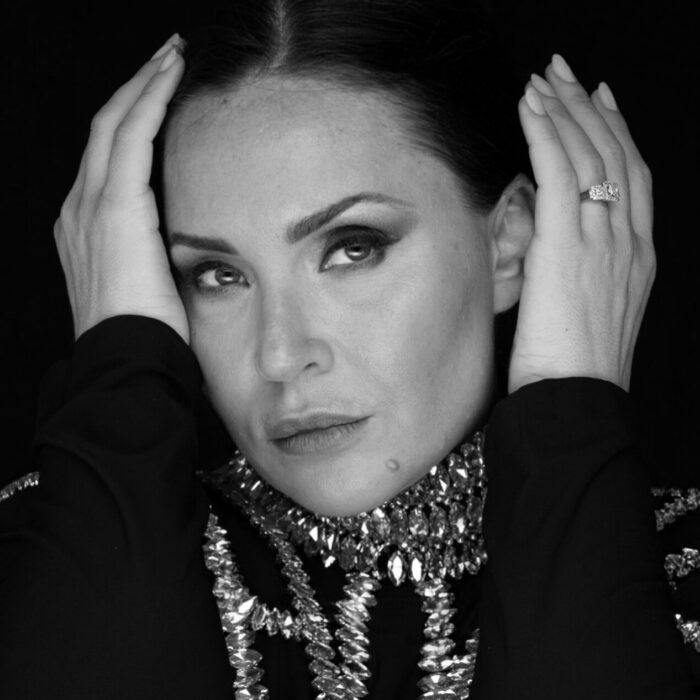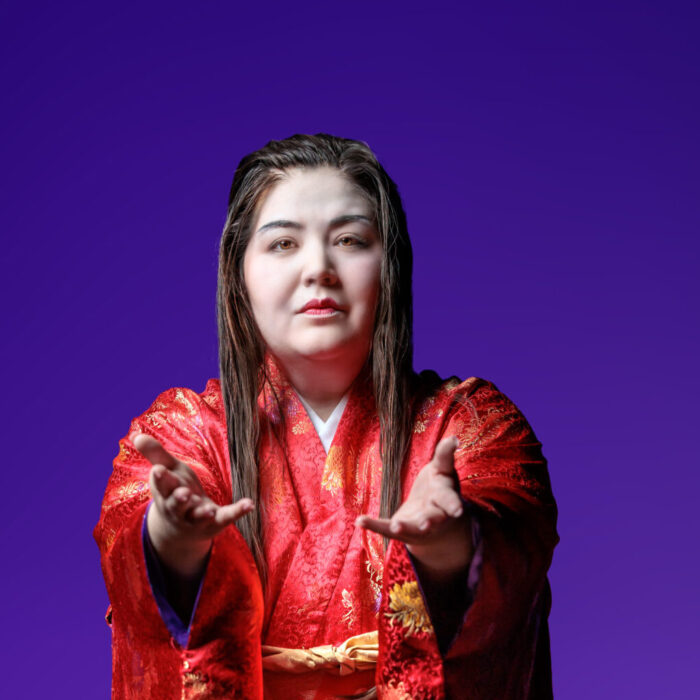
Q & A: Elsa Dreisig on Her New Album ‘Mozart X 3’ & Playing Different Roles
By Francisco SalazarElsa Dreisig credits Mozart with being the composer who first inspired her to become a professional singer.
And over the past years, the soprano has dominated his works singing his operas around the world. After two successful albums, Dreisig decided to pay tribute to the famed creator with an album devoted entirely to arias from his operas particularly the three masterpieces composed to libretti written by Lorenzo Da Ponte, “Le Nozze di Figaro,” “Don Giovanni,” and “Così fan Tutte.”
OperaWire spoke to the French-Danish soprano about singing Mozart, the three operas, and her collaboration with Louis Langrée.
OperaWire: Tell me how you came up with the concept for this album?
Elsa Dreisig: It was teamwork. This is why it is great to work with different people, your creativity is increased by other brains! Alain Lanceron, president of Warner Classics, told me about his idea to record the main arias of the female characters in Mozart’s Da Ponte operas — but sung by only one singer! As I really like to be challenged in life I told him I would be thrilled to do this. To complete the recording we added three arias from three of Mozart’s opere series. Hence the title “Mozart x 3.”
Coincidentally, this season I am also going to sing Mozart’s Da Ponte trilogy at the Staatsoper Berlin with a very interesting concept: Fiordiligi becomes Contessa who then becomes Donna Elvira. So all three women are the same person! To add another coincidence, “Mozart x 3” also happens to be my third album. So this was just meant to be! (laughs)
OW: You explore the three Da Ponte operas. Tell me about the differences in the vocal writing of these three operas. How are they different and how are they connected?
ED: In fact, this was the main thing we wanted to show with this album: How the structure of the roles is quite similar but how different they are musically. For example in each opera you have a “prima donna,” the upper class ladies, who have the biggest arias after a big recit. I am thinking of Fiordiligi, Contessa, Donna Anna and Donna Elvira. Then you have the “servants,” the characters of a lower standing in society, like Susanna, Zerlina, Despina. You also have the younger roles like Cherubino and Dorabella, both for mezzo-sopranos.
What you feel in all three operas is the teamwork between Mozart and Da Ponte. Even if these operas each tell a different story, and even if the music is completely different, there is the same spirit behind them: all characters are complex and messy, the main themes are love, betrayal, jealousy and revenge, but always, even in a tragic moment, there is reason to laugh. They speak about very difficult subjects, even hurtful ones but with a smile, and even in the darkest music, you feel a joy to sing it. It’s never only sad or only joyful. It’s such a nuanced way of composing music and theater!
OW: Throughout the album, you play different characters from the same opera. Tell me about this exploration and what did you learn about Mozart and about these characters as you were exploring their arias?
ED: I can’t give a short answer to this because there was so much to discover. As an example I was surprised how difficult Donna Elvira’s aria is compared to Elettra’s — even if these two characters have one thing in common: Both want revenge. They can be furious and dangerous. But Elvira’s aria has a difficulty that most of the other arias don’t have: it turns around itself. Elvira is stuck, she loves a man that she also hates. She is possessed by an impossible desire that reason can’t solve. You feel this in the music. As a singer you also get stuck. It’s really interesting!
OW: You are performing works that are regularly sung by Mezzos like Cherubino and Dorabella. How did you approach the vocal line and how did you know they fit your lyric voice?
ED: I started as a mezzo-soprano so I knew I could still sing them. Also because in Mozart’s music the “tessiture” are not so fixed compared to other composers like e.g. Puccini or Verdi. Most of the roles can actually be sung by different types of voices: Zerlina and Despina can be sung by a soprano or a mezzo-soprano. Elvira can be sung by a mezzo-soprano or a dramatic mezzo, or a light soprano — as it was done before, in the late 20 century — or a lyrical soprano like me. So you see, you have the choice in between a lot of colors! Fiordiligi has lower notes than Dorabella but all the ensembles are very high. So you need to have a “long” voice…
This was also something we wanted to show with this album: how the “borders” in Mozart are flexible and how important it is to find the character of the role, more than a type of voice. You have to feel: “This is a woman I want to play, I want to be.”
OW: You also included arias from “Idomeneo,” “La Clemenza di Tito,” and “Lucio Silla.” How do these arias differ from the Da Ponte works both textually and vocally?
ED: They have a very different spirit. First, writing “Lucio Silla” Mozart was very young and you feel it. He still is a very good “student” with some magical moments. In “Idomeneo” and “La Clemenza di Tito” you feel that he was more experienced. I was really happy to record these operas because you hear more Mozart “alone” and not as part of a team with Da Ponte. Of course, it’s still very theatrical but in a more “classical’ way. You feel the rules of the opera seria, you feel that this is more traditional. But even within these strict rules, Mozart shows freedom and creativity that amaze me.
OW: Tell me about collaborating with Louis Langrée and Kammerorchester Basel? What did you learn from the collaboration and how did it deepen your understanding of the music?
ED: I am so happy I recorded this album with them. Louis has a very personal and intimate relationship with Mozart. You feel he has worked in his music a lot. He knows the text and the characters very well. And he loves the voice. So I felt respected and free but also inspired by him.
Kammerorchester Basel also played a very important part because I wanted to work with a smaller orchestra, as in Mozart’s time, so we were more in a “chamber music” spirit. It’s a more intimate way of doing music. But it also means more responsibility for each of us: everyone is important as a person and not as a group. It’s team work of individuals which is precisely Mozart’s spirit: each of us has a big responsibility but none of us can “shine” if we are not working as a team.
OW: Mozart has been important to your career up to this point. What does he mean to you and what other roles by him do you hope to explore?
ED: Mozart is the definition of opera to me! To me he represents passion, joy, playfulness, smartness. His music has all the qualities I adore in humans. And somehow his music has been my companion since I was a baby: I started to listen to Mozart in my mother’s belly, my career started with Pamina in Berlin and Paris, I did my debut in Salzburg Festival with Fiordiligi, and now I am going to do the Da Ponte trilogy in Berlin in April! So Mozart is “un compagnon de route” as you say in French. And I am already looking forward to more adventures with his music in the future!
OW: How did making this record differ from your past two solo albums for Warner Classics?
ED: I can’t compare this album to the other ones. My second album was a lieder and songs album which I recorded with the great pianist Jonathan Ware. In this setting – with only one other person – you are more flexible, you decide when you want to take a break, you can change the plan etc. With an orchestra the recording process is more structured. There’s a schedule you have to stick to. You also can’t spontaneously decide to record a different aria because the orchestration varies from one aria to the other.
This is the first time I recorded only one composer so the spirit is different. In my first album, we were going from Strauss to Massenet, to Mozart, to Puccini… every day was another style, language, culture. So you really have to « reset » between each session. With Louis and Kammerorchester Basel we were in a flow, going deep into the discovery of Mozart. Of course, each song has a different feel to it but the global spirit was always Mozart.


